![Twenty Years of Ask Aaron [Click Me]](pic4/Ten_2.gif)

Privacy Policy
ps. i know not much about them [Atlanta, Georgia]
A: Mark J.The Robot Power Scorpion Nano is a very small, full-featured, dual channel (two motor) speed contoller for brushed motors.
A: Mark J. RBI productions didn't want the competitors to be in contact with each other, so their emails to us had the mailing list hidden. It wasn't until about a month before the filming that a partial list of the builder emails came to light. The only team I was in contact with was Team JuggerBot, who happened to be based about 40 miles to the south of my Oregon home. Our emails were largely about battery chargers for the Hawker SLA batteries both of our 'bots used -- nothing of general interest.
In terms of the interview schedule, I'm fairly certain Pete Miles' mystery robot is "Live Wires", which he shares a bunch of information and pictures about its Robotica adventure about in his book "Build Your Own Combat Robot". Hope that helps someone out there. [Alberta, Canada]
Response: I'm glad to hear you enjoyed reading the Robotica emails and I am grateful for the pointer to Pete Miles' book. I have a copy of "Build Your Own Combat Robot" in my library, but I last read it in 2006! Right there in chapter fourteen is a twelve-page write-up on building "Live Wires" and attempting to qualify at season 1 of Robotica:
Pete's team arrived at the Robotica filming in time for the last day of qualifying but ran into both electrical and mechanical problems. Although their effort ended in a cloud of grey smoke, the design was solid. A few more days for testing and their story might well have been different.
A: Mark J. I like designs that other builders dismiss as "mostly harmless" so I can take advantage when their guard is down. Weaponry is over rated -- I think a build with visual/fan appeal and a heart of cold rolled steel would work for me these days.
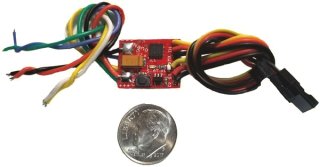 Q: what are scorpion nanos good for (Wedge bots? hammers? lifters? etc, etc)
Q: what are scorpion nanos good for (Wedge bots? hammers? lifters? etc, etc)
The Nano is more expensive than no-name ESCs, but is full featured and well documented. The two channels cannot be combined for greater power capacity, so it is best suited for brushed drive motor control in 1-pound antweight or smaller bots.
 Q: I read the compilation of Pre-Production Emails to Robotica Season 1 Competitors from the event organizers that you put together for the 25thanniversary of the show. Great stuff, but I wonder about the emails between you and the other builders. Are you going to release them as well? [Chicago, Illinois]
Q: I read the compilation of Pre-Production Emails to Robotica Season 1 Competitors from the event organizers that you put together for the 25thanniversary of the show. Great stuff, but I wonder about the emails between you and the other builders. Are you going to release them as well? [Chicago, Illinois]
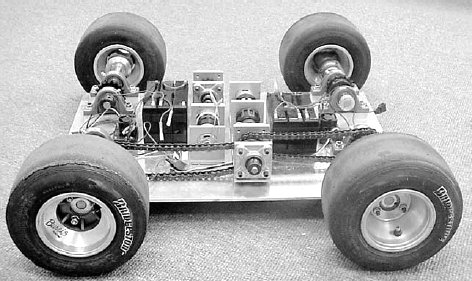
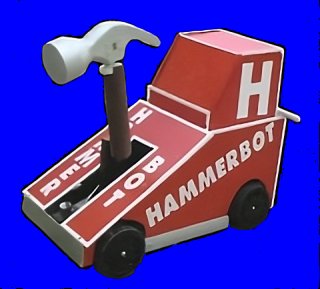 Q: If you were to build a robot today, what would it look like? [Northampton, England]
Q: If you were to build a robot today, what would it look like? [Northampton, England]
A: Mark J. There are multiple posts in the Ask Aaron Archives on flywheel flippers. The archive search box will provide assistance in finding them.
I was watching an NHRL stream and was interested in a beetleweight (3 lb) overhead saw robot called "Mako". I was having trouble figuring out how exactly the circular saw was mounted to the weapon motor, as it appears to be held on only by a TPU hub and lock nut (no screws or fasteners threaded directly into the motor. Any feedback is greatly appreciated. [Zanesville, Ohio]
A: Mark J. Mako's weapon is not the usual hobby brushless outrunner with a printed hub like 'Cheesecake'. As disclosed in this video Mako's saw is "...a literal off-the-shelf circular saw that you could walk into Home Depot and buy." It's likely a 4.5" cordless framing saw torn down to just the motor and hub.
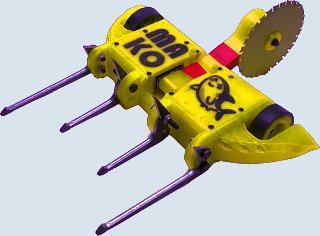
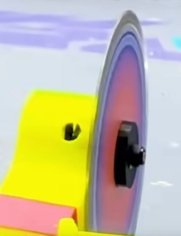
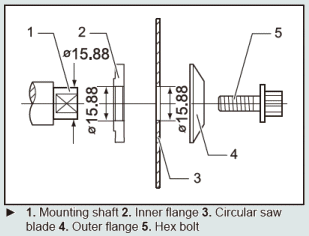
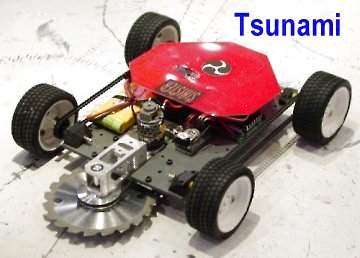 Q: Hi Mark. I met you way back at the 2002 Botbash tournament in Tempe, Arizona. I was with a friend who had a robot in the antweight tournament and I remember that you were one of the event judges. I've found some videos of the bigger Botbash robots from that tournament but nothing from the ant fights. Did you happen to take video of any of the ant matches? [An iCloud Server]
Q: Hi Mark. I met you way back at the 2002 Botbash tournament in Tempe, Arizona. I was with a friend who had a robot in the antweight tournament and I remember that you were one of the event judges. I've found some videos of the bigger Botbash robots from that tournament but nothing from the ant fights. Did you happen to take video of any of the ant matches? [An iCloud Server]
A: Mark J. That was a great event. My flight got in too late to register 'Rat Amok' for the antweight tournament, but I did get a couple of pick-up matches and I was able to sneak into the ant rumble. I did also sit in as a judge for the SozBots ant tournament.
Although I didn't shoot any video, a search of my robot combat archive turned up a CD with twenty ant combat matches from the SOZBots 1.4 tournament at BotBash! I have no idea where the videos came from but they are so nicely captioned and edited that they may have come directly from SOZBots.
I've uploaded this set of videos to my YouTube channel as a playlist titled "SozBots 1.4: Antweight Combat Robot Tournament". I also found a bracket tree for the event: SOZBots 1.4 brackets.
My favorite fight from SOZBots 1.4? One Fierce Beer Coaster vs. Tsunami -- it has a very suspenseful ending.

A: Mark J. Tip-Top was not a gyro-walker -- the description at the Robot Wars Wiki is misleading:
When the disc was spinning at full speed, the actuators could be fired to tip the disc mechanism, and the resultant gyroscopic forces from the dome pressing against the ground would move the robot. This form of locomotion, nicknamed in the modern day as "gyro-walking".
Gene Burbeck's beetleweight One Fierce Low Ryda used this propulsion method quite successfully -- racking up a six-win/two-loss record at the 2008 Motorama tournament. Gene calls this style of propulsion 'wackerdrive'.
The earliest combat true gyro-walker I know of is Team Misfit's antweight 'Gyrobot' which first fought in 2009.
However my maths is failing me (See bad drawing attached for definitions of symbols). For calculating the force on the lifter arm from the servo in the setup is it as simple as x*sin(theta)? However isn't that just the force transmitted between the servo arm and the arm of the linkage? What about transmission of force between the arm linkage and the lifter arm itself? Are there further losses there?
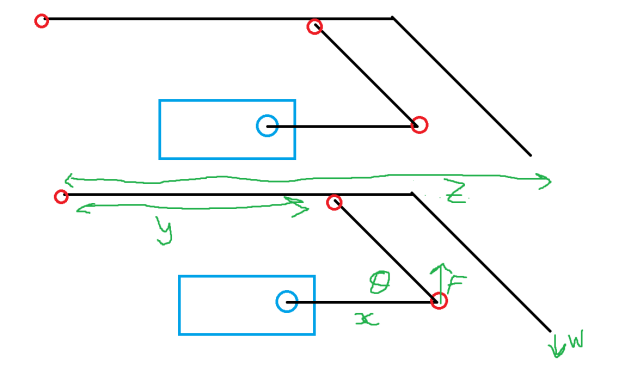
And then to calculate whether you can lift something or not, is it (F * y) - (W * z) (Where F is the force from the lifter motor on the arm, W is the weight of the robot being lifted, y is the distance between pivot and lifting point and z is the distance between pivot and robot being lifted)?
Hope this makes sense
Thanks in advance.
A: Mark J. You've opted to open up the jumbo can-o-worms, eh? What you have is known as a 4-bar mechanism, and the calcs are especially nasty because the lever advantages keep changing as the lift progresses. In your sketch the initial advantage is poor and a good deal of torque is needed, but as theta increases the advantage improves and less torque is required. The general approach is to calculate the actual rise in the tip of the lifter for each change of say 1 degree of servo arm motion and convert that into a torque requirement for each progressive angle.
I know this because I wrote a pair of 4-bar Excel spreadsheets that perform these calculations for standard "Biohazard" style 4-bar lifters (movement up and forward) and for the servo linkage you describe (single pivot hinge motion). That is the good news.
The spreadsheet I wrote for the servo-powered single-pivot lifter has the correct geometry for your purpose, but the example layout has a hinge point much farther forward than your design. You will need to adjust bar lengths and angles to morph into your longer rear-hinge design. This may well take some time. Here are the spreadsheet link assignment letters as they apply to your sketch:
Give it a shot. If the calculations balk, you can wade thru the "Equations" tab on the spreadsheet and make adjustments as needed. Download the Team Run Amok Servo Lifter Spreadsheet from our Combat Robot Design Tools page.



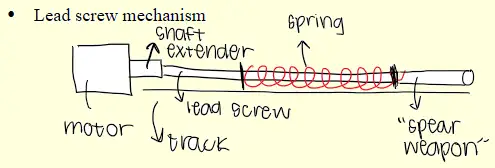
A: Mark J. The reason that your internet search came up blank is that there is no simple and practical method to retract and then quickly release your spear with the lead screw mechanism you propose.
I was wondering if you have experience / recommendation for tire preparation beyond alcohol wipes / cleaning a cast urethane tire up. Cleats seem the primo option for max traction on wooden floors for beetles but I've had issues with opponents mangling mine so I'd like to look for advantages with urethane wheels.
A: Mark J. The Brazilians swear by two methods to improve polyurethane tire traction:
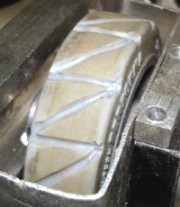 Sticky treads collect dust, grit, and oil which smear around their surface. Casting or cutting lateral and/or diagonal grooves into the tire provides voids into which the tire can wipe collected gunk, allowing the tire to clean itself rather than just continuing the smearing. Diagonal grooves give a smoother rolling action than do lateral grooves.
Sticky treads collect dust, grit, and oil which smear around their surface. Casting or cutting lateral and/or diagonal grooves into the tire provides voids into which the tire can wipe collected gunk, allowing the tire to clean itself rather than just continuing the smearing. Diagonal grooves give a smoother rolling action than do lateral grooves.

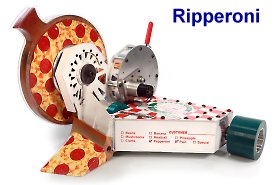
A: Mark J. A flywheel will cancel the spinning weapon's gyro forces if the two spin in opposite directions and have equal products of inertia and speed:
A more complete explanation of calculating gyro forces is available here: Designing Around the Gyroscopic Effect.
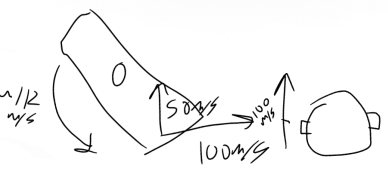 The reason I'm asking this is because in many internet builder circles (Reddit, Discord) these days I'm seeing an upsurge in the sentiment that head on vert on vert contact is somehow partially decided by RPM (???) and not entirely by tip speed which does not really make much sense to me. This is generally supported by an anecdote and/or Youtube clip of a vertical with a measured ~200 mph tip speed launching a vert with ~250-300 mph tip speed weapon on weapon. Where I believe the RPM assumption originated is the fact that these videos tend to feature a low profile drum (inherently higher RPM to reach X tip speed) against a high profile large diameter vert (inherently lower RPM to reach X tip speed). What I think happened here is that the vector decomposition at contact resolved in the "lower tip speed" vert having a higher vertical speed at contact. Then the condition arose that RPM was somehow a determinant of engagement. Any thoughts? [Arlington, Virginia]
The reason I'm asking this is because in many internet builder circles (Reddit, Discord) these days I'm seeing an upsurge in the sentiment that head on vert on vert contact is somehow partially decided by RPM (???) and not entirely by tip speed which does not really make much sense to me. This is generally supported by an anecdote and/or Youtube clip of a vertical with a measured ~200 mph tip speed launching a vert with ~250-300 mph tip speed weapon on weapon. Where I believe the RPM assumption originated is the fact that these videos tend to feature a low profile drum (inherently higher RPM to reach X tip speed) against a high profile large diameter vert (inherently lower RPM to reach X tip speed). What I think happened here is that the vector decomposition at contact resolved in the "lower tip speed" vert having a higher vertical speed at contact. Then the condition arose that RPM was somehow a determinant of engagement. Any thoughts? [Arlington, Virginia]
A: Mark J. Everybody likes to simplify a complex interaction: it's all about tip speed, it's all about RPM, it's all about bite, it's all about googly eyes...
I don't buy your analysis that the y-component of the impact is different for the two weapons. The line tangent to the point at which two circles of differing diameter touch provides an identical x-y vector to each circle (purple arrow in illustration below). We need to look elsewhere for an explanation.
In your scenario: even though the large diameter vert has a higher tip speed than the small diameter drum it will have a considerably lower RPM which gives it much better bite. It may well avoid the impactors on the small drum and strike the drum itself. Here's where it gets interesting.
As the surfaces of the two verts are moving in the same direction, the impact vector magnitude is reduced to only the difference in tip speed rather than the full speed of the larger weapon. However, the 'kickback' vector (yellow arrow in the illustration above) is independent of the weapon tip speed difference and has a magnitude related to the displacement created by the impactor. This 'up and back' kickback may very well launch a high-energy large-diameter weapon under these conditions.
 The whole "Tip Speed Rules" argument says that the impactor of the slower weapon cannot 'catch up' to the impactor of the faster weapon and will therefore inevitably be struck from behind and launched by the faster weapon. This assumes that neither weapon has enough 'bite' to get past the opponent's impactor and hit some 'meat'.
The whole "Tip Speed Rules" argument says that the impactor of the slower weapon cannot 'catch up' to the impactor of the faster weapon and will therefore inevitably be struck from behind and launched by the faster weapon. This assumes that neither weapon has enough 'bite' to get past the opponent's impactor and hit some 'meat'.
// bite depth calculator weapon-teeth-speed -- insert-bite
var insert1 = 1 / ((weapon.value / 60) * teeth.value) ;
var bite1 = speed.value * (5280 / 3600) * insert1 * 12 * 24.2 ;
insert.value = insert1.toPrecision(2) ;
bite.value = bite1.toPrecision(3) ;
This particular error - in my Rotary Weapon Bite Calculator - undercalculated weapon bite by a tad less than five percent by screwing up an inches to millimeters conversion. The code has been corrected and I have attached a remark giving you full credit. As I don't know your name I have credited "Walter Codepoker".
One down, twenty-six to go. Keep up the good work.
A: Mark J. A continuous box of conductive plate or mesh forms a Faraday Cage that can block radio reception -- but most heavyweight robots have substantial gaps for weaponry or feature non-conductive cover plates. Very small holes are not effective at allowing radio signals to enter but gaps of 1/2" or more will allow a 2.4 GHz frequency wave to leak in.
It's also vitally important to position the receiver and antennae away from internal components that produce electrical interference. This comment from Team Monsoon at their Reddit AMA highlights that problem:
You can watch UK live events on Extreme Robots TV -- a subscription is free.
 A: Mark J. I think your prediction is premature. Heavyweight combat robots are still going strong in the UK many years after Robot Wars left the television networks. Both Robots Live! and Extreme Robots have live heavyweight show tours that draw large crowds.
A: Mark J. I think your prediction is premature. Heavyweight combat robots are still going strong in the UK many years after Robot Wars left the television networks. Both Robots Live! and Extreme Robots have live heavyweight show tours that draw large crowds.
In idealized conditions (smooth non-wedged armor, constant closing velocity) at contact...
- The normal vector component is the ONLY force relative to the opponent that matters for damage- so the optimal speed value is some undefined amount below the "skate" threshold dependent on some math I don't want to do right now.
- If the normal force component exceeds the kick-back vector produced by the hard armor panel, then the weapon will be pressed or "engaged" with the opponent robot and then some of the tangential force can be dumped into the opponent - therefore the optimal speed is the highest you can go without skating, and energy transfer "cliffs" off after that point.
A: Mark J. Both of your scenarios are important to energy transfer, but which holds greater importance will be dependent on the weapon style.
A: Mark J. My new combat robot setup guide for EdgeTX uses a Radiomaster Zorro transmitter for its example. This Link will jump you straight into the single stick mixing section of the guide.
You'll also need to adjust your left gimbal to be self-centering. Here's a video: Zorro gimbal adjustment.
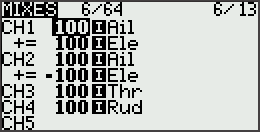

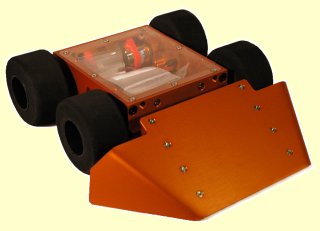 Q: Isn't there anything we can do about those stupid kit bots? They're ruining the insect weight classes! I really hate to see some guy show up at a tournament with a kit they put together in an afternoon and beat up real robots that real builders took a lot of real time designing and fabricating. Can't they just compete in a class for kit bots only?
Q: Isn't there anything we can do about those stupid kit bots? They're ruining the insect weight classes! I really hate to see some guy show up at a tournament with a kit they put together in an afternoon and beat up real robots that real builders took a lot of real time designing and fabricating. Can't they just compete in a class for kit bots only? A: Mark J. Complaining about kit bots is like complaining that frozen pizza is ruining dinner because it tastes better than what you cook. If you can't beat a kit bot you need to up your game.
 Q: Went to set up my new Viper V3 antweight kitbot today. Followed all the instructions but can’t get it to work.
Q: Went to set up my new Viper V3 antweight kitbot today. Followed all the instructions but can’t get it to work.
I made it to testing with the 9V battery. When I power it on the ESCs lights are bright red but then instantly shut off, and the receiver slowly blinks red. No inputs do anything. Now after several tries no lights turn on at all. I checked all connections. [Social Media]
A: Mark J. How long has that 9 volt been in your battery drawer? The LED signals you see and the sudden complete electrical failure all point to a weak battery. Try a fresh battery.
Q: That got it! The 4th 9V I tried fixed this. Charging up a Lipo battery now.
A: Mark J. I've never actually tried, but it shouldn't be very hard. You can only go where the rails go, so just give it a little throttle and toot the whistle once in a while.

|
Remembering Aaron Joerger, 1991 - 2013
The 'Ask Aaron' project was important to Aaron, and I continue the site in his memory.
Thank you for the many kind messages of sympathy and support that have found their way to me.
Aaron's obituary
|

Q: how can robots help us deal better with hurricanes and why? [Ontario, California]
A: [Aaron] Few people in Nebraska are threatened by hurricanes, so send a swarm of killer robots into low Atlantic and gulf coastal areas to drive the puny human inhabitants toward Nebraska. Problem solved.
Robot haiku:
|
That's obviously A question from your homework. Do your own research. |


how to design and build a battlebot

Copyright 2009, 2025 by Mark Joerger
All rights reserved.










 Even small combat robots can be dangerous! Learn proper construction and safety techniques before attempting to build and operate a combat robot. Do not operate combat robots without proper safeguards.
Even small combat robots can be dangerous! Learn proper construction and safety techniques before attempting to build and operate a combat robot. Do not operate combat robots without proper safeguards.
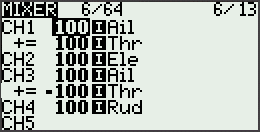

 Q: What do your combat robots think of the current COVID-19 pandemic? [Kansas City, Missouri]
Q: What do your combat robots think of the current COVID-19 pandemic? [Kansas City, Missouri]